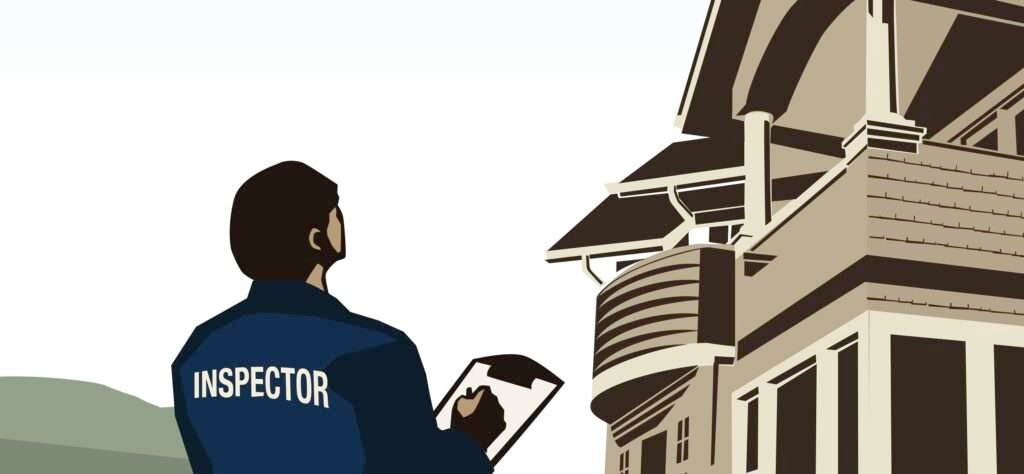Purchasing a new build home is an exciting milestone, but it’s crucial to ensure that your new property meets the high standards you expect. This is where the snag list, or snagging inspection, comes into play. At Austenite Technical Services, we help new homeowners navigate the snagging process, ensuring that any defects or issues are identified and addressed before moving in. This beginner’s guide will walk you through the essentials of new build inspections and how to effectively conquer the snag list.
What is a Snag List?
A snag list, also known as a punch list, is a comprehensive list of defects, incomplete work, or minor issues found in a newly built property. The goal of the snagging process is to identify these issues so that the builder can rectify them before the homeowner takes full possession of the property.
Why is a Snag List Important?
Ensuring Quality
Even reputable builders can miss minor issues during construction. A snag list ensures that every detail is checked and meets the expected quality standards, giving you peace of mind that your new home is built to last.
Protecting Your Investment
Your home is likely one of the most significant investments you’ll make. Identifying and fixing issues early on protects your investment and prevents potential future expenses related to unresolved defects.
Improving Livability
Addressing snags ensures that your home is comfortable and functional from day one. It eliminates the inconvenience of dealing with defects or incomplete work after you’ve moved in.
When to Conduct a Snagging Inspection
The best time to conduct a snagging inspection is after the builder has completed the construction and before you officially take ownership. Ideally, this should be done a few weeks before the completion date to allow enough time for the builder to address any issues.
Key Areas to Inspect
Structural Elements
Check for any visible cracks, uneven surfaces, or signs of poor workmanship in the walls, floors, and ceilings. Ensure that doors and windows open and close properly and that all structural elements are aligned and secure.
Plumbing and Heating
Test all taps, showers, and toilets to ensure they function correctly and that there are no leaks. Check the heating system, including radiators and thermostats, to confirm they are working efficiently.
Electrical Systems
Inspect all light switches, sockets, and electrical outlets to ensure they are correctly installed and functional. Test smoke detectors and other safety devices to confirm they are operational.
Finishes and Fixtures
Examine the quality of finishes, such as paintwork, tiling, and flooring. Ensure that fixtures, including cabinetry, countertops, and railings, are securely fitted and free from damage.
External Areas
Check the exterior of the property for any defects, such as poorly fitted roof tiles, guttering issues, or inadequate drainage. Inspect garden areas, driveways, and fences to ensure they are completed to a high standard.
Conducting the Snagging Inspection

Professional vs. DIY Inspections
While you can conduct a snagging inspection yourself, hiring a professional snagging inspector can provide a more thorough assessment. Professional inspectors have the expertise to identify issues that may be overlooked by an untrained eye.
Creating a Comprehensive Snag List
When conducting the inspection, be methodical and detailed. Note down every issue, no matter how minor, and take photographs as evidence. Group issues by category (e.g., plumbing, electrical) to make the list easier to manage.
Communicating with Your Builder
Once your snag list is complete, present it to your builder and agree on a timeline for rectifying the issues. Regularly follow up to ensure that the work is being completed to your satisfaction.
FAQs on Snagging Inspections
1. What should I do if my builder refuses to address the issues on my snag list?
If your builder is uncooperative, refer to your contract and any warranties provided. Legal advice may be necessary to enforce your rights and ensure the issues are resolved.
2. How long does a snagging inspection take?
A thorough snagging inspection can take several hours, depending on the size and complexity of the property. A professional inspector may take longer to ensure a detailed assessment.
3. Can I conduct a snagging inspection after moving in?
While it’s best to conduct the inspection before moving in, you can still perform a snagging inspection after taking possession. However, addressing issues may be more disruptive once you are living in the property.
4. Are snagging inspections necessary for all new builds?
While not legally required, snagging inspections are highly recommended for all new builds to ensure quality and avoid future problems.
5. How much does a professional snagging inspection cost?
The cost varies depending on the size of the property and the complexity of the inspection. On average, professional snagging inspections can range from a few hundred to several thousand AED.
6. What if new issues arise after the snagging inspection is complete?
Most builders offer a warranty period during which they will address any new issues that arise. Be sure to report these issues promptly to take advantage of the warranty.
7. Can a snagging inspection delay my move-in date?
A snagging inspection itself shouldn’t delay your move-in date, but addressing the identified issues might. It’s best to schedule the inspection well before your planned move-in date to avoid delays.
8. How can I prepare for a snagging inspection?
Ensure all areas of the property are accessible and take a checklist to ensure you don’t miss anything. Being prepared helps make the inspection process smoother and more efficient.
Conclusion
Conquering the snag list is a crucial step in ensuring that your new build home in Dubai meets the highest standards of quality and livability. At Austenite Technical Services, we are dedicated to helping you through this process with our professional snagging inspection services. By understanding the importance of the snag list, knowing what to look for, and addressing issues promptly, you can enjoy your new home with confidence and peace of mind. Contact us today to schedule your snagging inspection and take the first step toward a flawless new home.












